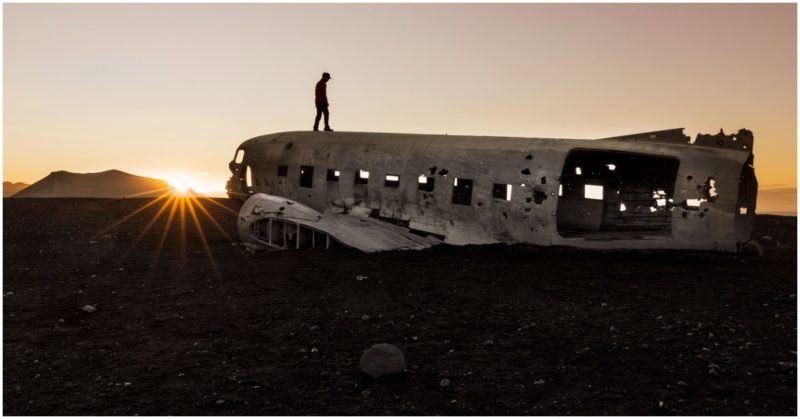This quivering old wreck is what expertvagabond. com refers to as “… one of Iceland’s most iconic & haunting photography locations”, and rightfully so.
The DC-3 wreck is now a famous object that both professional and amateur photographers play with whether day or night in hope to take the perfect shot. An epic wreck that went through thousands of photographic lenses.
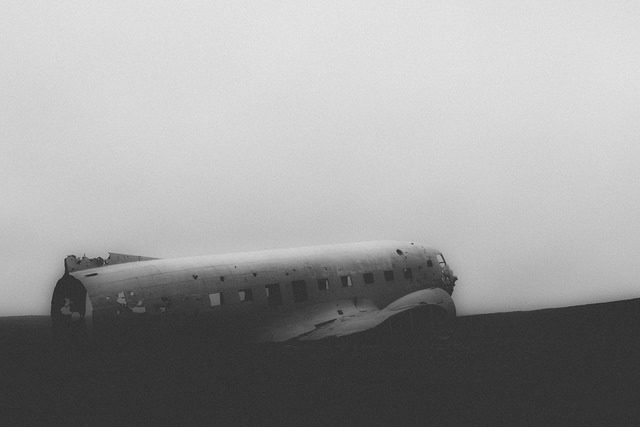
On November 24, 1973, DC-3 Douglas Super, part of the U.S Navy was all set for a journey to an undisclosed location somewhere in Iceland. For reasons yet unknown, DC-3 was forced to land.
Instead, it crashed on the Sólheimasandur beach, a place that’s a pure challenge to pronounce let alone land a massive plane on it. Once the public got hold of this information, that’s when the speculations started to fly. The story goes that the plane wants through serious icing, that caused all the malfunctioning of the equipment.
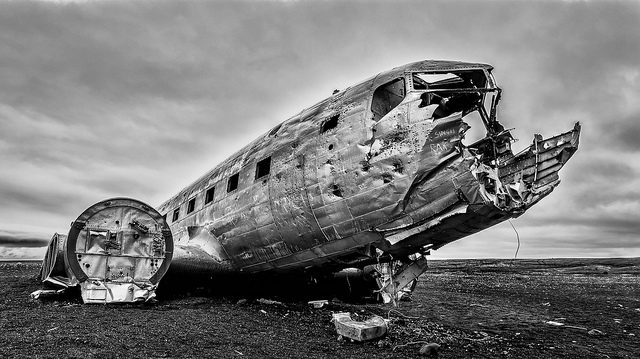
Another story follows a different path and puts the blame on one of the pilots, for a wrong decision was made when the pilot needed to switch to a different fuel tank. The mistake was – the pilot chose the empty one. Needless to say but physics work different than they do in cartoons and the plane was soon in a nosedive position.
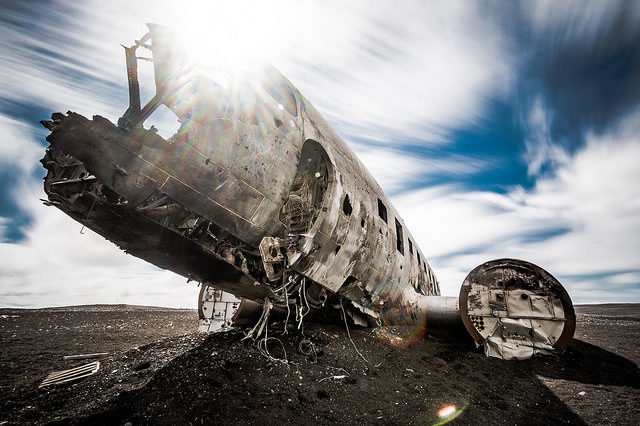
The lucky outcome of the whole situation is that all of the crew members survived the rather harsh landing. But then again there is another mystery regarding the data of the actual crash.
According to the reports of Aviation Safety Network, the plane crashed on November 24, 1973. But things get further tangled up when one realize that the crash was already covered by the local newspaper. The problem is that the newspaper was published on 22nd of November suggesting that DC-3 crash-landed on the 21st.
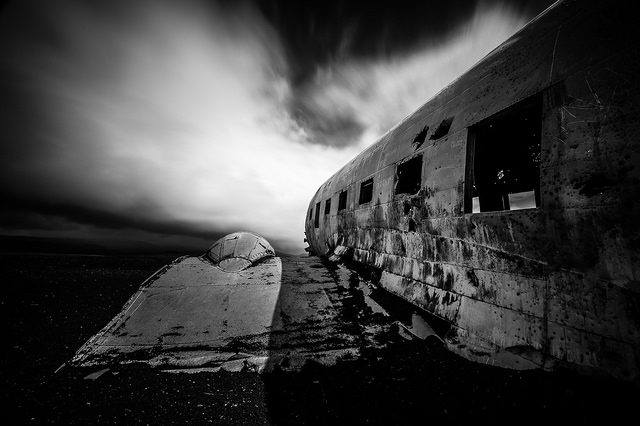
For whatever reason, it had crashed and when the plane remained there, never reclaimed and abandoned. The harsh Icelandic climate destroyed most of the plane. Douglas DC-3 was an airliner that could reach speeds of 300km/h. It was a revolutionary plane that changed the air transport of the 1930s and 40s. The aircraft was unique for it had fixed-wing propellers. With time DC-3 became a true American icon.
DC-3 is the brainchild of Donald Wills Douglas Sr, an American aircraft engineer and industrialist. It was after TWA (Transcontinental and Western Airlines) asked Donald to design an aircraft that could compete with whatever Boing was producing.
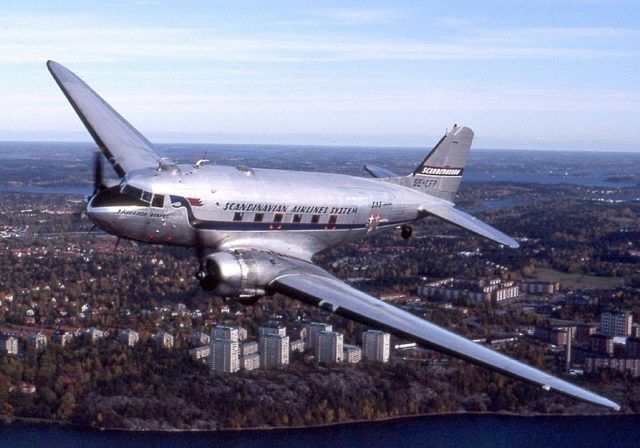
His initial design of DC-1 was successful enough and that prompted the creation of DC-2. Once more, this aircraft was a success. But Donald thought that this plane could achieve much more. The DC-3 model came as a replacement of Curtiss T-32 Condor II, another American aircraft icon.
Donald managed to sell twelve planes even before the aircraft was designed that initially was named Douglas Sleeper Transport (DST). The commercial version of the plane used Wright R-1820 Cyclone engine whereas the military type (such as this one that crashed on the Sólheimasandur beach) was equipped with Pratt & Whitney R-1830 Twin Wasp engine.
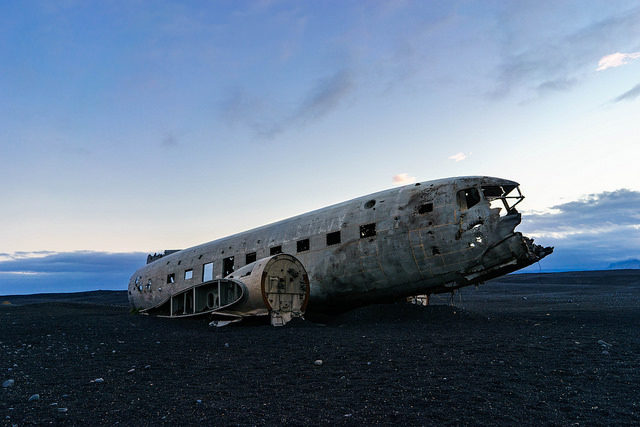
The DC-3, in general, was successfully used during the Second World War. It was sent on a number of secret missions .
The planes that Donald designed were a major success and more than 16,000 were sold. Matter of fact the design was so timeless that DC-3 is still in use today.
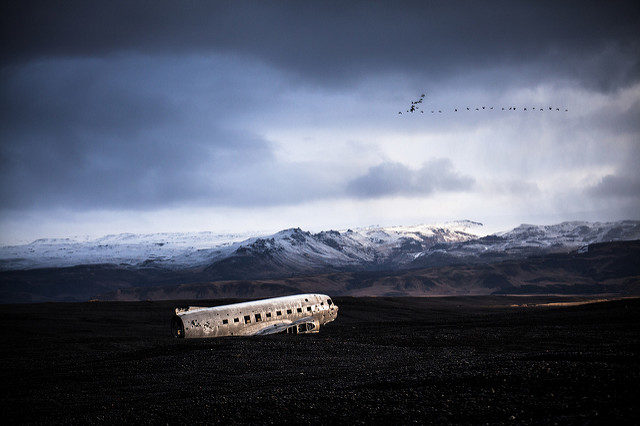
“It seems a wonder that this beautifully- designed and engineered airliner should still be flying a daily scheduled route in northern Canada in the second decade of the 21st Century. But it does, and does it well: DC-3s have a long life ahead of them yet” writes BBC in their article named The Douglas DC-3: Still revolutionary in its 70s.
Today this wreckage is no less impressive on the ground than it is up in the skies. People from all four sides of the globe come to visit and snap a photo, thus preserving its story before time takes it away.
